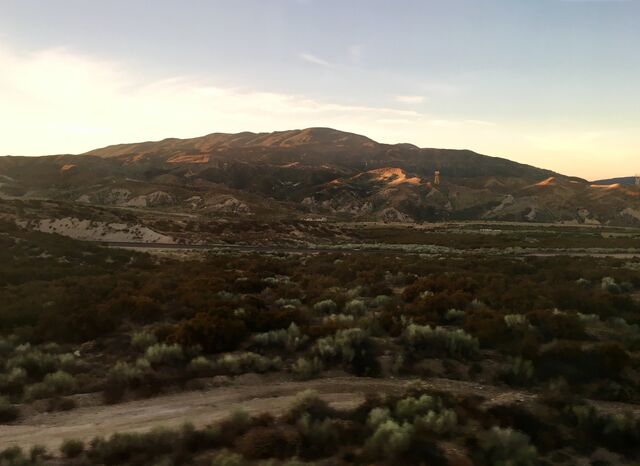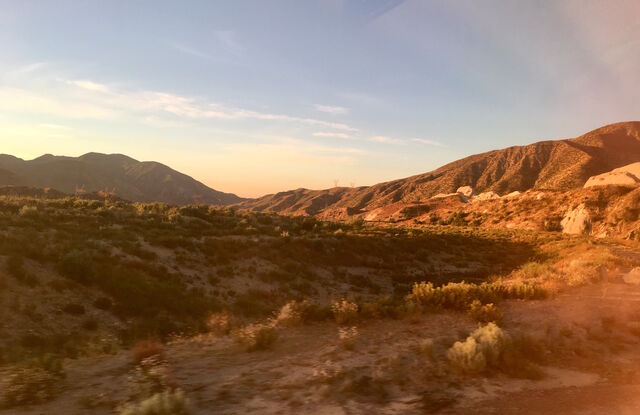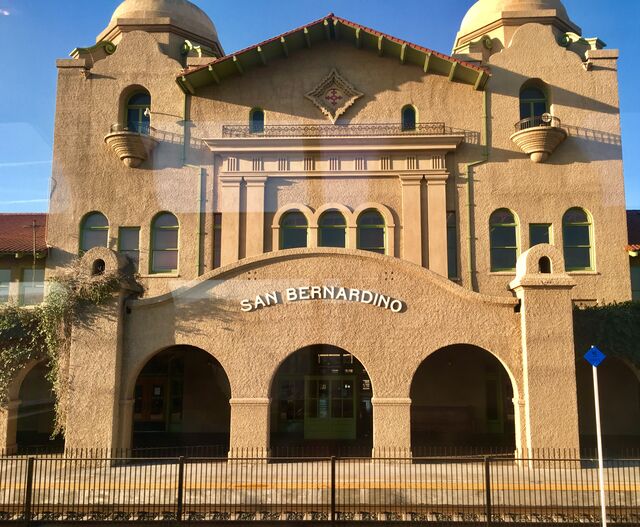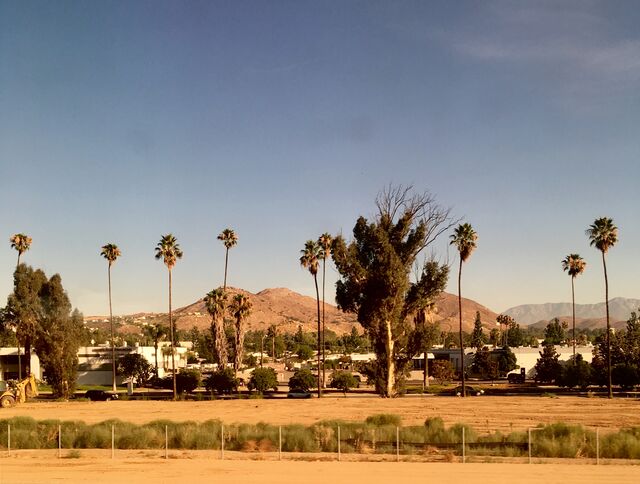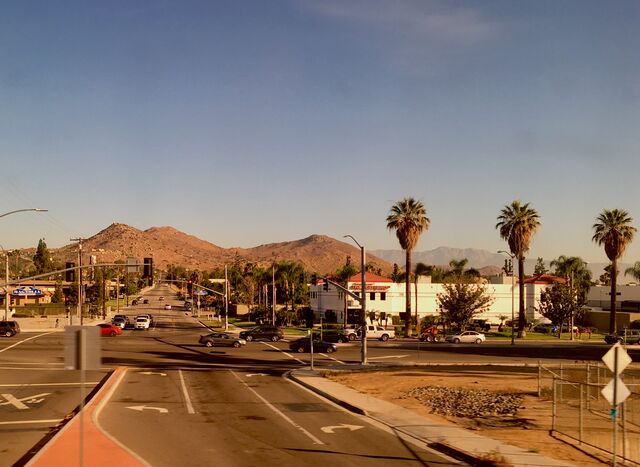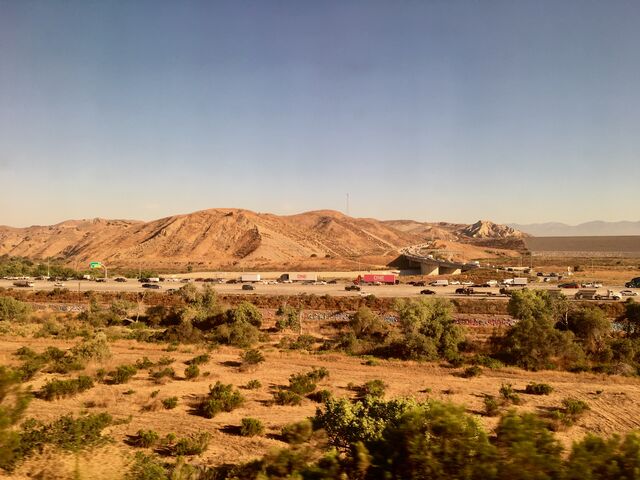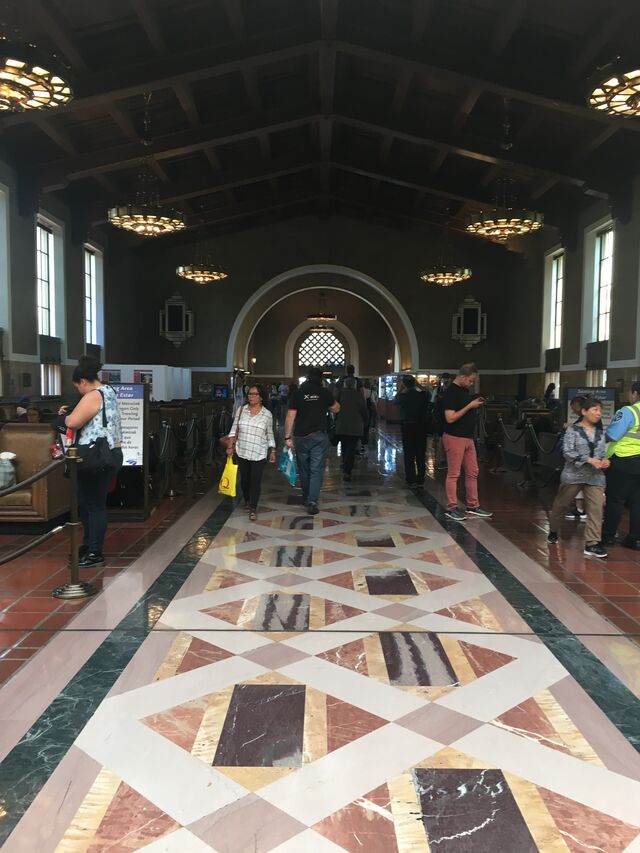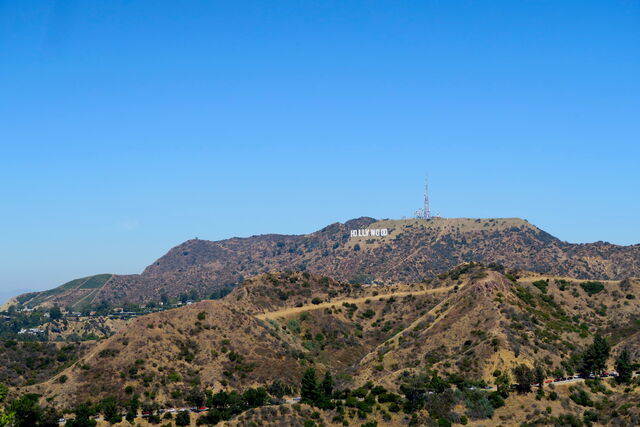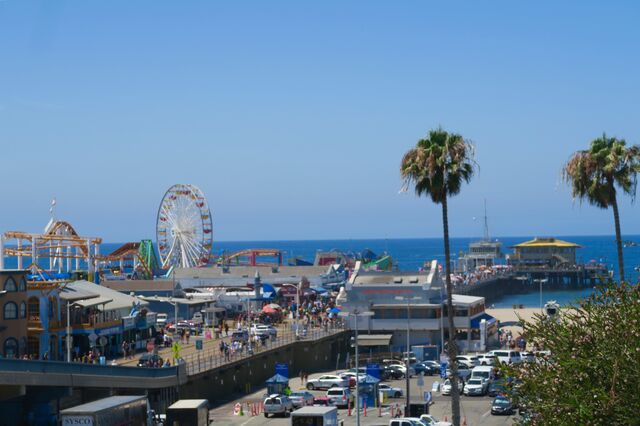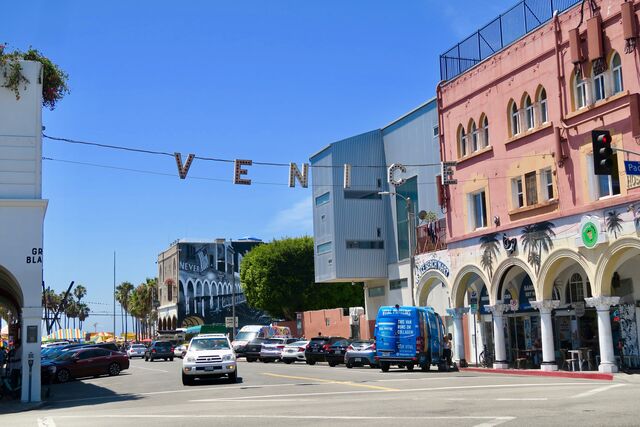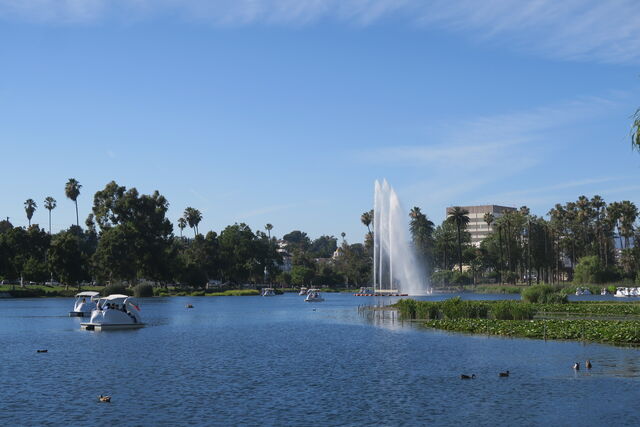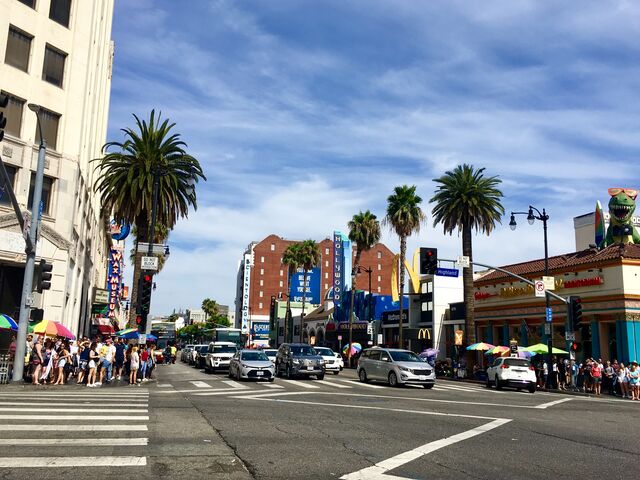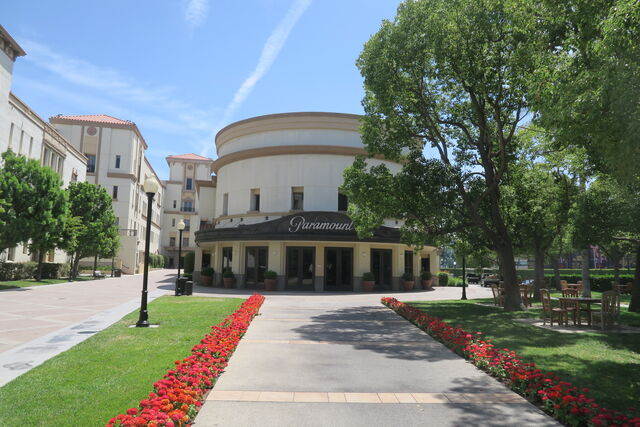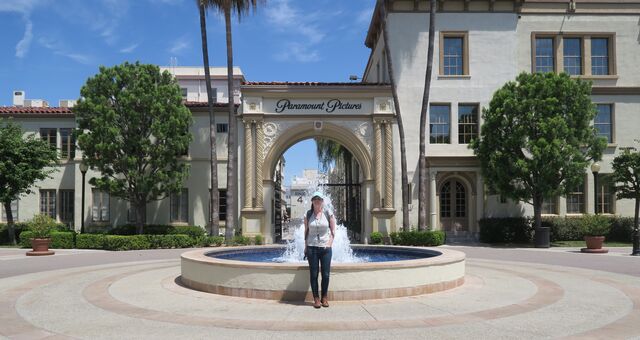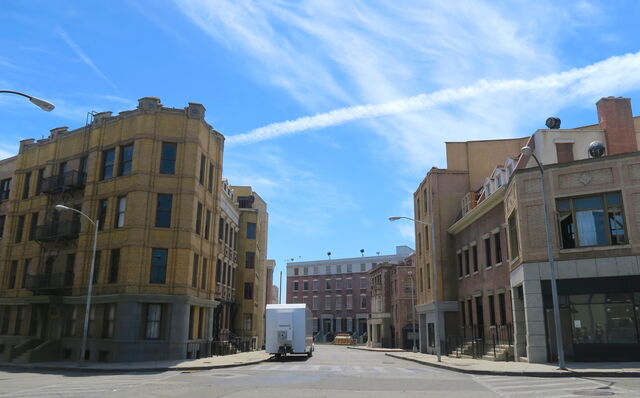Flagstaff to Los Angeles
The Flagstaff to Los Angeles segment of the route was travelled through the night, however, I was able to get some pictures of the scenery when I awoke in the morning, before the train arrived at Los Angeles’ Union Station around 9am. I was pleasantly surprised by just how mountainous California was. Over night, the train had stopped at Barstow, where a 19th century Harvey House building could be seen. Built in the 19th century, people would leave the train and dine at the Harvey House, before re-boarding and continuing on their journey. Apparently waitresses at the Harvey House would have to sacrifice half of their salary if they were married in their first year of employment. About half an hour after Barstow, the train passed the San Andreas Fault.
Los Angeles
The Southwest Chief pulled into Los Angeles alongside a large concrete channel which has apparently been used in dozens of movie chase scenes. LA’s Union Station is notable for its impressive Art Deco and Spanish architecture, as well as its beautiful gardens lined with palm trees.
During my time in LA, I stayed in the Downtown area which has apparently undergone a revival in the last 10 years or so. Whilst the area didn’t feel unsafe, many of the buildings were still ugly and unoccupied, and there were countless homeless people on every corner. I had to be careful not to accidentally venture into Skid Row whilst exploring the Downtown area.
I had 3 days to explore LA. I had spoken to at least 5 people before my trip who had recently visited the city, and not one of them had enjoyed their experience. The common complaint related to how spread out the city is, and the associated difficulty of getting around without a car. Whilst I was thus expecting to similarly dislike the city, I ended up enjoying it much more than anticipated. Contrary to what I had been told, there is a decent public transport system which runs throughout the city and I never had to wait more than 10 minutes for a train or bus to get where I wanted to go. That said, I have never seen more empty trains in my life. There is perhaps a good reason for this – it took me at least 2 hours (each way) to get anywhere, so it makes sense that people prefer to drive rather than rely on public transport. As may be clear from this blog, however, I am not averse to sitting on public transport for hours on end, so the long journey times did not trouble me. However, I did have to be fairly strategic about what I did each day, as it was really only possible to visit one area of the city per day.
I enjoyed visiting the Griffith Observatory from which there are excellent views of the surrounding hills and the Hollywood sign.
I also spent time visiting Santa Monica, Venice, and Hollywood.
By far my favourite activity in LA was the Paramount Pictures studio tour. Despite having read that the Warner Brothers studio tour was more exciting, I was much more interested in Paramount Pictures as the oldest American film studio still in operation. For 2 hours, a group of 7 of us were driven around the studio on a cart, stopping to see various sets and sound stages, and exploring the studio’s backlot which is used to film exterior scenes, with streets that look like New York and Chicago.
We also saw various props and backdrops such as the fake LA sky mural which is used because the often cloudless (real) LA sky appears more fake in films than the fake mural. At each set, we were shown brief clips from some of the movies that were filmed there. The tour guide tailored the tour to the group’s interests, having asked us at the beginning to share our favourite films. Having played Lionhead Studios’ The Movies for years growing up – an excellent business simulation computer game where you create and run your own movie studio – I immensely enjoyed touring a studio in real life. Surprisingly, the computer game which I knew so well was pretty much spot on with its representation of how a movie studio operates, from the sets and trailers, to the on-site hospital and post-production studio.
The other 6 people on my tour did not speak, so I was able to ask the guide all of the questions I desired as we drove around the studio. I particularly enjoyed quizzing the guide about the landmark US Supreme Court anti-trust case of United States v Paramount Pictures (1948) which effectively dismantled the Hollywood studio system as it was known up until that point. The studio’s Tour Centre also contained an excellent display which outlined the history of the studio.
